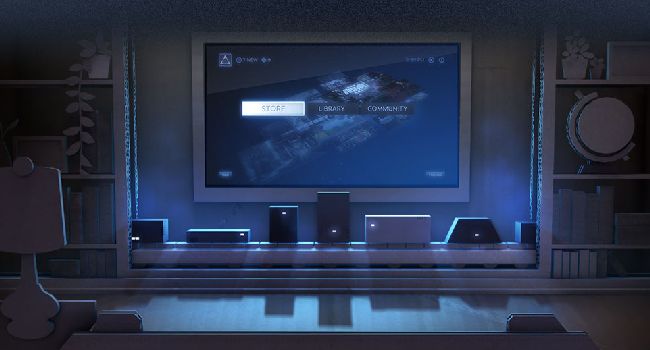While the world continues to mourn the lack of information on Half-Life 3, Valve has decided that it hasn’t quite finished playing with our hearts. Though it’s decreed 2014 a big year for gamers, it’s not quite for the reasons we’d hoped (read: more Half-Life). No, Valve has instead unveiled a machine that combines the power of the traditional PC with the portability of the everyday console. Except Valve isn’t going to make it — at least not entirely.
No ad to show here.
So let’s get this straight. Valve is readying the Steam Machine, a console that works on its proprietary Steam operating system. It’s going to be portable, like a console, but also customisable, like a computer. Sound in theory, right?
Indeed, Valve hopes it’ll draw hardcore PC gamers away from their dimly lit bedrooms and into their living rooms, while similarly offering console gamers a level of optimisation that no rival console can match.
Except that Valve isn’t planning on making any, besides 300 prototypes that it’s already sent to playtesters. Instead it’s teaming up with key partners. Each manufacturer will develop a Steam Machine of its own. That means lots of Steam Machines housing different tech, at different prices, and with a different look. The only constant is that each will run SteamOS. That means plenty of Valve-branded content, without Valve actually needing to engineer anything. It’s a great idea, all told — for Valve.
Emulating life
But is the Steam Machine necessary? Why not simply make your own PC and then hook it up to a large display using an HDMI cable? Why would a consumer well-versed in the ways of PC optimisation be interested in a branded machine they could emulate at less cost? And why would a console gamer fork out a whopping US$2500 for Digital Storm’s Bolt II when they can get their thrills from the recently-released PlayStation 4 and Xbox One, two consoles with established lineage and a library of games that will balloon over the coming years?
Say you decide to line Digital Storm’s pockets now (reportedly its Steam Machine will be coming this January, before its rivals). What happens when a better bargain arrives at the tail-end of the year? Alienware, for instance, is readying a Steam machine of its own, but it hasn’t disclosed a price. Gamers on a budget might be more tickled by the iBuyPower’s Steam Machine, which costs only US$500. But for the money, you get 4GB RAM, a slow processor and 500GB storage space. That isn’t even Xbox One territory.
Valve hopes we’ll be swayed by the idea of a customisable console, but console gamers buy consoles for the very fact that they don’t have to worry about tinkering with the machine’s innards. And PC owners build their rigs from scratch because it affords them total control and a chance to cut costs.
Niche Market
It begs the question: what niche market will be interested in the Steam Machine? With so many variables at work, and in a marketplace where the consumer is so fickle, I simply can’t see a captive audience. Sure, I can understand the logic behind it. I just don’t see any real need for it.
I do, however, like the Steam machine controller Valve has worked tirelessly on for the past two years, trialing numerous prototypes before arriving at something that feels part-gamepad, part-mouse. It’s somehow fitting for a system that doesn’t know whether it’s a console or a PC.
They began by experimenting with trackballs, like the ones used in the old Blackberry Curve. The trackball emulated the feeling of a mouse, but fit within the confines of a gamepad. Over time the trackball turned into a full trackpad, which supports gesture control and provides “haptic feedback.” Valve is planning to add a touchscreen, and though this isn’t finished yet, the prototype model is certainly striking. It looks like something Batman might have attached to his utility belt.
Above and beyond the way the gamepad looks, however, I’m struck by the way Valve is looking to bring the responsiveness of a mouse to the traditional gamepad. That could very well revolutionize the way we play games. In fact, long after the dust settles on the Steam Machine, the controller might prove to be Valve’s biggest innovation of all.
I certainly find it difficult to get behind the idea of the Machine itself. There seems to be too much choice (over thirteen different manufacturers are at work on their own OEM Steam Machines), and while Valve is clearly targeting armchair gamers with knowledge of PC specs, why wouldn’t these consumers simply build their own PC and plug it into their TV? Yes, a desktop PC is not inherently portable, but is the solution a branded Alienware machine that ships with an astronomical price tag?
If you’re interested in the Steam Machine all the same, your best bet is to wait until the end of the year when many of the Machines – in their various guises – would have been released. That way you can at least make an informed choice.
In the meantime, brace yourself for Half-Life 3 rumours aplenty. The itch for the return of Gordon Freeman doesn’t seem to be abating.
Image via Digital Trends
